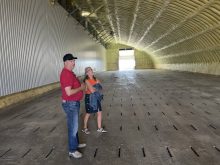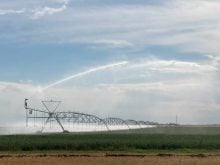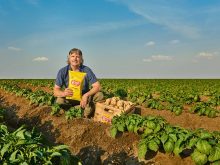New report finds that the sector contributes billions of dollars to the national economy and has created thousands of jobs
Alberta’s potato growers continue to produce more than just spuds.
A new report on the sector’s economic impact has found that it contributes nearly $3 billion to the Canadian economy.
The report, commissioned by Potato Growers of Alberta, said the surge in potato production in Western Canada continues, accounting for almost half of all production in Canada from less than a quarter of national production in the early 1990s.
That increase has largely been driven by the process and chip potato sector, which has almost doubled in the last 25 years.
Read Also

Saskatchewan throne speech promises strong economy
Saskatchewan’s legislative agenda for the coming year will focus on meeting the challenges of new world trading relationships, said the speech from the throne.
“We knew our industry had grown a lot in recent years,” PGA chair James Bareman told reporters after the report was released.
“But we had no accurate assessment of its overall impact on our economy.”
Bareman also highlighted the sector’s job creation and financial impact.
“(The report) further documents job creation of 9,390 full-time equivalent jobs, $660 million in employment income, a $1.33 billion contribution to GDP and $87 million in tax revenue to federal and provincial governments,” he said.
Bareman credited the industry from top to bottom for the growth — from growers to processors to the service industry and researchers — which has turned Alberta into the largest potato sector nationally.
“In the next three years, we expect the industry to grow by a minimum of 20 percent,” said Bareman.
That increase is being driven by expansions in southern Alberta’s irrigation and processing capacity as well as improvements in the region’s transportation network.
“In Alberta, we have a reputation for having sustainable farms with regenerative practices, with proper use of our inputs and water,” said Bareman. “As the pressure comes to expand, we’re going to have to look for more acres and putting more acres on because we don’t want to reduce our rotations or cut corners to achieve this expansion.”
That might pose a challenge to growth, according to Bareman, and so will access to water resources.
This year’s irrigation infrastructure failure at Lethbridge Northern Irrigation District’s headgates, along with low water levels along rivers that feed other irrigation providers, has got the attention of politicians, farmers and irrigations districts, he said.
“Moving forward, we will be building protections to ensure the system doesn’t fail again,” said Bareman.
In addition to improving water management, he said managing other inputs such as fertilizer and soil will also contribute to being able to increase production.
“This is not a huge jump, 20 percent over three years I think allows us to slowly expand and our farmers have proven time and time again that they are able to supply a quality product,” said Bareman.
While seed production makes up 20 percent of potato production in the province, primarily north of Red Deer, much of the growth of overall production will likely come in the southern half of the province.
McCain Foods announced in March it will invest $600 million into its Coaldale, Alta., facility, which will double capacity of the plant.
Lamb Weston-ConAgra and Cavendish Farms also have french fry processing facilities along the Highway 3 corridor between Lethbridge and Medicine Hat.
















